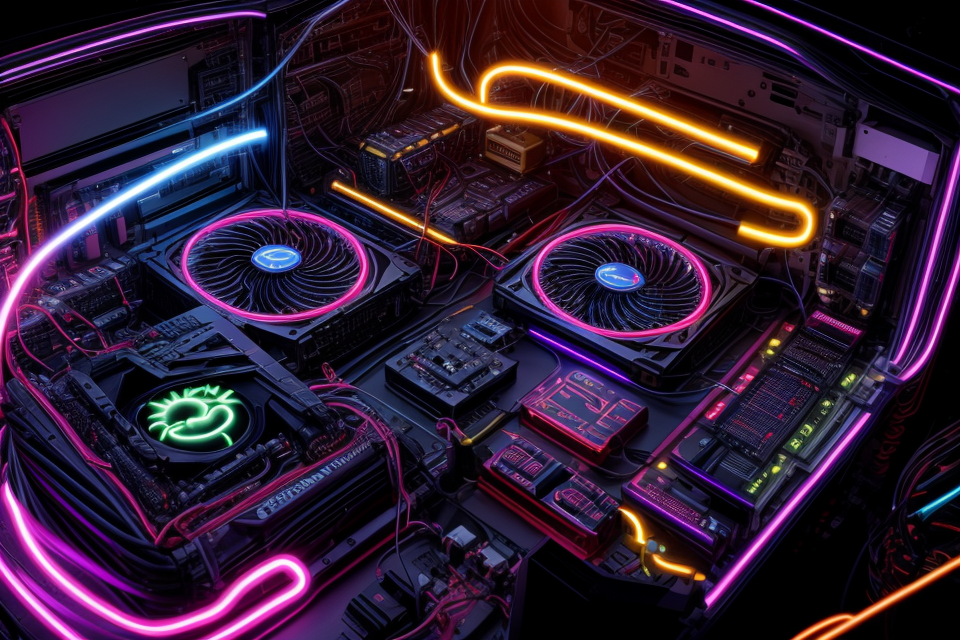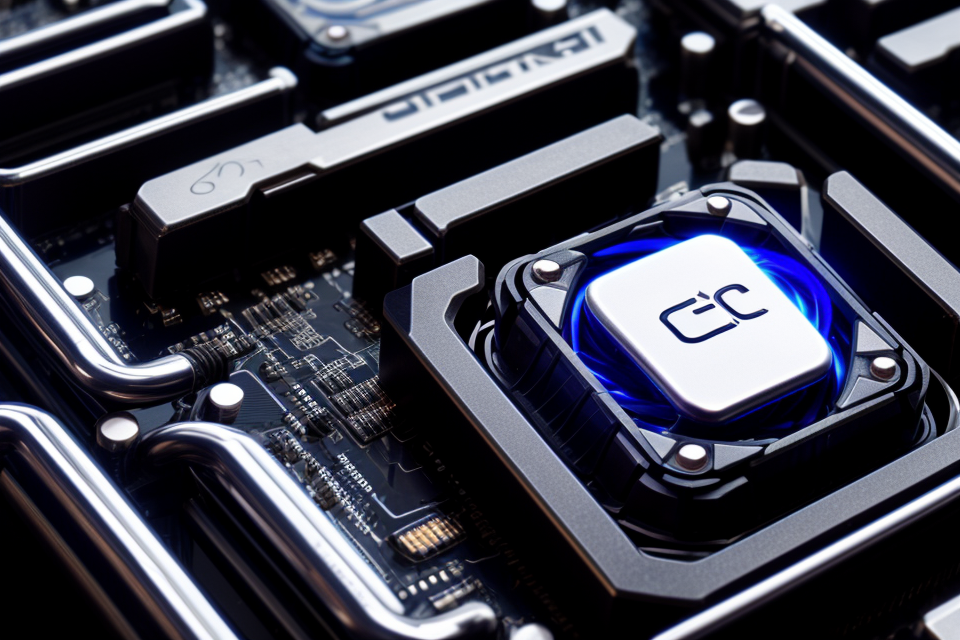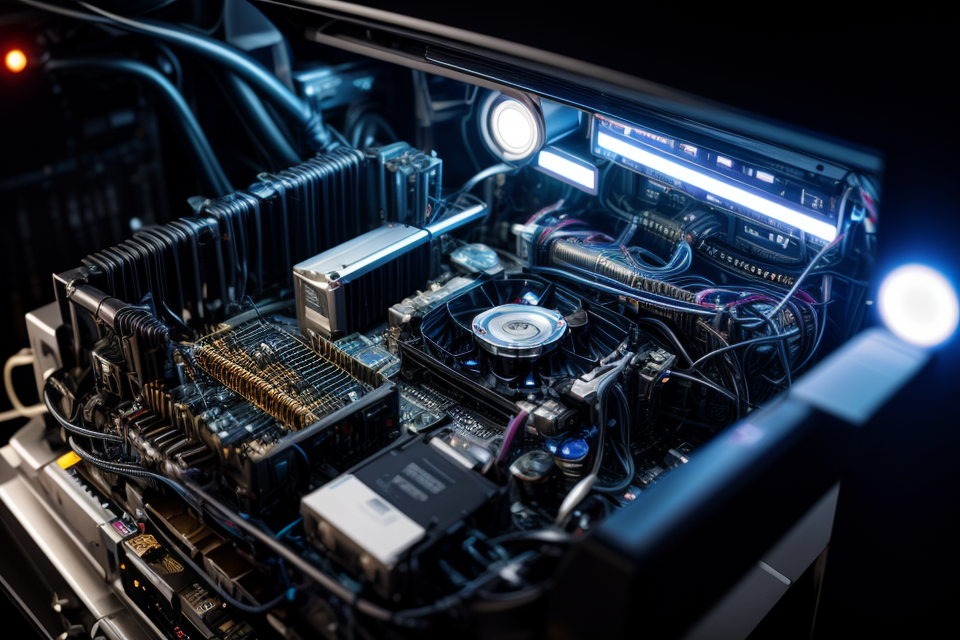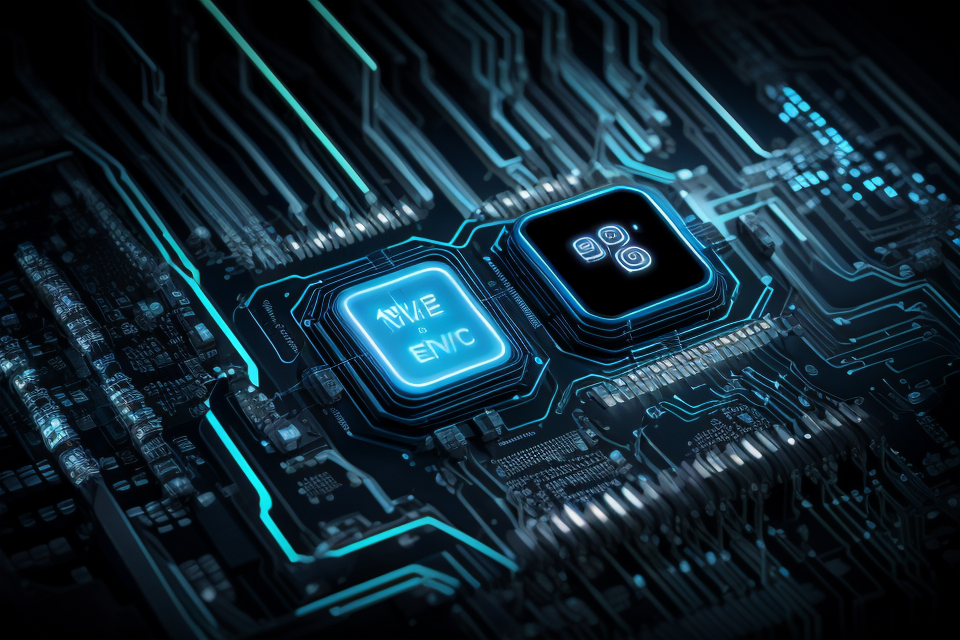
Overclocking is the process of increasing the clock speed of a computer’s CPU and/or GPU beyond their factory settings. This can provide a temporary performance boost, allowing the computer to handle more demanding tasks or run games at higher resolutions and frame rates. However, it can also lead to increased heat output and a higher risk of hardware failure. In this article, we will explore the potential benefits and risks of overclocking, and what you need to know before attempting to overclock your own CPU and GPU. Whether you’re a seasoned gamer or a curious beginner, read on to learn more about the thrilling world of overclocking.
Overclocking your CPU and GPU can improve their performance by increasing their clock speed, which allows them to process more instructions per second. However, overclocking can also cause increased heat output and can potentially damage the components if they are not properly cooled. Additionally, overclocking can also lead to increased power consumption and shorter lifespan of the components. It is important to note that overclocking may also void the manufacturer’s warranty and may not always result in a significant performance improvement. Therefore, it is recommended to carefully research and understand the potential risks and benefits before attempting to overclock your CPU and GPU.
Understanding Overclocking
What is overclocking?
Overclocking is the process of increasing the clock speed of a computer’s central processing unit (CPU) or graphics processing unit (GPU) beyond its factory settings. This is achieved by modifying the hardware or firmware of the component to allow it to run at a higher frequency. The result is an increase in the performance of the CPU or GPU, allowing the computer to perform tasks faster and more efficiently.
The concept of overclocking has been around since the early days of computing, with enthusiasts experimenting with ways to push their hardware beyond its intended limits. Today, overclocking is a common practice among computer enthusiasts and gamers who demand the highest levels of performance from their systems. However, it is important to note that overclocking can be risky and can potentially damage the hardware if not done properly.
How does overclocking work?
Overclocking is the process of increasing the clock speed of a computer’s CPU or GPU, which can lead to improved performance. This is achieved by changing the voltage and other settings in the hardware to allow it to run at a higher frequency. However, it is important to note that overclocking can be risky and may result in damage to the hardware if not done properly.
Overclocking works by adjusting the clock speed of the CPU or GPU, which is the rate at which the processor performs calculations. By increasing the clock speed, the processor can complete more calculations per second, resulting in improved performance. This can be especially beneficial for tasks such as gaming or video editing, where a higher level of performance is required.
To overclock a CPU or GPU, the user must first determine the maximum safe clock speed for their specific hardware. This can typically be found in the manufacturer’s documentation or through online resources. The user can then use software or hardware tools to adjust the clock speed and voltage settings of the CPU or GPU to reach the desired overclocked speed.
It is important to note that overclocking can be risky and may result in damage to the hardware if not done properly. This is because overclocking increases the amount of heat generated by the CPU or GPU, which can cause thermal throttling or other issues if the cooling system is not adequate. Additionally, overclocking can cause instability or other issues that can lead to system crashes or other problems.
In conclusion, overclocking is the process of increasing the clock speed of a computer’s CPU or GPU to improve performance. This is achieved by adjusting the voltage and other settings in the hardware to allow it to run at a higher frequency. However, it is important to note that overclocking can be risky and may result in damage to the hardware if not done properly. It is important to research and understand the specific hardware and software requirements for overclocking before attempting to do so.
CPU Overclocking
Benefits of CPU overclocking
Overclocking your CPU (Central Processing Unit) refers to the process of increasing its clock speed, which is the frequency at which it performs instructions. By overclocking your CPU, you can enhance its performance and gain a competitive edge in tasks that require heavy processing power.
Here are some benefits of CPU overclocking:
- Improved performance: Overclocking your CPU can significantly boost its performance, allowing your computer to perform tasks faster and more efficiently. This is particularly useful for activities that require a lot of processing power, such as gaming, video editing, and data analysis.
- Increased frame rates: In gaming, frame rates refer to the number of images displayed per second. Overclocking your CPU can lead to increased frame rates, resulting in smoother gameplay and a more responsive gaming experience.
- Enhanced gaming experience: With better performance and increased frame rates, overclocking your CPU can lead to a more immersive and enjoyable gaming experience. You’ll be able to play games at higher settings, with fewer lag or stutter issues, and a generally smoother overall experience.
However, it’s important to note that overclocking your CPU can also lead to increased heat production and power consumption, which can potentially damage your hardware if not done properly. Therefore, it’s crucial to monitor your system’s temperature and voltage levels while overclocking, and to make sure you have a reliable cooling solution in place to prevent overheating.
Risks of CPU overclocking
When you overclock your CPU, you are increasing its clock speed, which can improve performance but also poses certain risks.
- Heat and thermal throttling
Overclocking can generate more heat, which may cause the CPU to throttle down to prevent damage. This can lead to a decrease in performance, and in extreme cases, the CPU may shut down to prevent permanent damage.
- Stability issues
Overclocking can cause instability in the system, leading to crashes, freezes, or other unexpected behavior. This can be due to the increased stress on the CPU, as well as other components in the system.
- Damage to hardware
Overclocking can also cause physical damage to the CPU, such as burns or short circuits, which can render the hardware unusable. It is important to note that CPUs are designed to operate within a certain range of temperatures, and exceeding this range can cause permanent damage.
Additionally, overclocking can void the CPU’s warranty, and it may also void any warranties on other components in the system. Therefore, it is important to carefully consider the risks before attempting to overclock your CPU.
GPU Overclocking
Benefits of GPU overclocking
Overclocking your GPU can provide several benefits, including:
- Increased frame rates: Overclocking your GPU can increase the number of frames per second (FPS) that your computer can render. This can lead to smoother gameplay and a more responsive gaming experience.
- Improved graphics performance: Overclocking your GPU can also improve the overall graphics performance of your computer. This can lead to better visuals, more detailed textures, and more realistic lighting effects.
- Enhanced gaming experience: With improved graphics performance and increased frame rates, overclocking your GPU can provide an enhanced gaming experience. This can make games more immersive and enjoyable, and can help you get the most out of your gaming setup.
Risks of GPU overclocking
GPU overclocking, also known as graphics card overclocking, involves increasing the clock speed of the graphics processing unit (GPU) in a computer. While this can improve the performance of certain tasks, such as gaming or video rendering, it also carries certain risks.
One of the main risks of GPU overclocking is heat and thermal throttling. When the GPU is overclocked, it generates more heat, which can cause the temperature of the graphics card to rise. If the temperature gets too high, the GPU may throttle back its clock speed to prevent damage to the hardware. This can result in a decrease in performance, and in some cases, it may even cause the graphics card to fail completely.
Another risk of GPU overclocking is stability issues. When the GPU is overclocked, it may become more unstable, which can cause crashes or other problems. This is because the increased clock speed can cause the GPU to draw more power, which can cause instability in the power supply. Additionally, overclocking can cause the GPU to become more susceptible to errors or other issues.
Finally, GPU overclocking can also damage the hardware. When the GPU is overclocked, it can cause the components of the graphics card to wear out faster than they would normally. This can result in decreased performance over time, and in some cases, it may even cause the graphics card to fail completely. Additionally, overclocking can cause the graphics card to become more susceptible to other types of damage, such as short circuits or other electrical problems.
Overall, while GPU overclocking can improve the performance of certain tasks, it is important to be aware of the risks involved. It is important to carefully monitor the temperature and stability of the graphics card while overclocking, and to avoid overclocking too much, in order to prevent damage to the hardware.
Comparison of CPU and GPU overclocking
When it comes to overclocking, both CPUs and GPUs can benefit from increased performance. However, there are differences in the benefits and risks associated with overclocking each component. It’s important to consider these factors when deciding whether to overclock your CPU or GPU.
Benefits of CPU Overclocking:
- Increased performance: Overclocking your CPU can increase its clock speed, which can lead to improved performance in tasks that rely heavily on the CPU, such as gaming, video editing, and scientific simulations.
- Improved efficiency: Overclocking can also improve the efficiency of your CPU, allowing it to complete tasks more quickly and with less power consumption.
Risks of CPU Overclocking:
- Damage to the CPU: Overclocking can cause damage to the CPU if it’s pushed beyond its limits, leading to a decrease in performance or even complete failure.
- Heat and power consumption: Overclocking can also increase heat and power consumption, which can lead to decreased lifespan of the CPU and increased energy costs.
Benefits of GPU Overclocking:
- Increased performance: Overclocking your GPU can increase its clock speed, which can lead to improved performance in tasks that rely heavily on the GPU, such as gaming, video editing, and scientific simulations.
- Improved efficiency: Overclocking can also improve the efficiency of your GPU, allowing it to complete tasks more quickly and with less power consumption.
Risks of GPU Overclocking:
- Damage to the GPU: Overclocking can cause damage to the GPU if it’s pushed beyond its limits, leading to a decrease in performance or even complete failure.
- Heat and power consumption: Overclocking can also increase heat and power consumption, which can lead to decreased lifespan of the GPU and increased energy costs.
When considering overclocking your CPU or GPU, it’s important to weigh the benefits and risks associated with each option. It’s also important to consider the specific task or application for which you’re overclocking, as some tasks may benefit more from CPU overclocking while others may benefit more from GPU overclocking. Additionally, it’s important to have a good understanding of your hardware and the specific limits of your CPU and GPU before attempting to overclock.
Monitoring and Maintaining Overclocked Systems
Tools for monitoring overclocked systems
Overclocking your CPU and GPU can provide a significant performance boost, but it can also lead to instability and hardware damage if not done properly. Therefore, it is essential to monitor your overclocked system to ensure that it is running smoothly and safely. There are several tools available that can help you monitor your overclocked CPU and GPU.
- CPU-Z: CPU-Z is a free utility that provides detailed information about your CPU, including clock speed, core voltage, and temperature. It also includes a memory benchmark that can help you determine the performance of your RAM. CPU-Z is an excellent tool for monitoring your CPU’s performance and identifying any issues that may arise.
- GPU-Z: GPU-Z is a similar utility to CPU-Z, but it is designed specifically for GPUs. It provides information about your GPU’s clock speed, memory clock speed, and temperature. GPU-Z can also display the current GPU load and fan speed, which can help you identify any issues that may be causing instability or overheating.
- MSI Afterburner: MSI Afterburner is a free utility that allows you to overclock your GPU and monitor its performance. It includes a range of features, such as fan control, GPU stress testing, and a benchmarking tool. MSI Afterburner is an excellent tool for fine-tuning your GPU’s performance and identifying any issues that may arise.
Overall, these tools can help you monitor your overclocked CPU and GPU, identify any issues that may arise, and ensure that your system is running smoothly and safely.
Best practices for maintaining overclocked systems
Proper cooling
Effective cooling is critical to ensure that your overclocked CPU and GPU components operate within safe temperature ranges. This is especially important during prolonged periods of high-performance usage, such as gaming or video rendering. To achieve proper cooling, consider implementing the following measures:
- Install high-quality thermal paste on your CPU and GPU to facilitate efficient heat transfer.
- Ensure that your system’s cooling system, including fans and heatsinks, is functioning optimally.
- Monitor the temperature of your CPU and GPU using monitoring software, and adjust fan speeds accordingly to maintain safe operating temperatures.
Regular software updates
Regular software updates are essential for maintaining system stability and compatibility, especially when you have overclocked your CPU and GPU. Software updates can fix bugs, improve performance, and enhance security features. It is crucial to keep your operating system, drivers, and other software up to date to avoid potential issues that may arise from using an outdated or incompatible version.
Periodic hardware checks
Regular hardware checks are necessary to ensure that your overclocked CPU and GPU components are functioning optimally. This includes checking for any signs of wear and tear, such as dust buildup or damaged components. Dust buildup can impede the flow of air through your system, causing temperatures to rise and potentially damaging your components. Conducting periodic hardware checks can help you identify and address any issues before they become more severe problems.
Final thoughts and recommendations
Overclocking can provide significant performance improvements, but it is important to understand the potential risks and side effects. Ultimately, the decision to overclock should be based on your specific needs and the capabilities of your system.
- Whether to overclock or not
- Consider the performance gains that overclocking can provide, but also weigh the potential risks and side effects.
- Overclocking may not be necessary for all users, and it may not provide a noticeable performance boost for some systems.
- If you are not comfortable with the risks involved, it may be best to avoid overclocking.
- Expert advice for those who decide to overclock
- Follow guidelines and recommendations from reputable sources, such as manufacturer instructions and expert websites.
- Use reputable software and tools for monitoring and adjusting overclocking settings.
- Start with conservative overclocking settings and gradually increase them as needed.
- Monitor your system closely for stability and performance issues.
- Consider investing in high-quality cooling solutions to help maintain stability and prevent damage to your components.
- Future of overclocking technology
- Overclocking technology is likely to continue to evolve and improve in the future.
- Advancements in manufacturing processes and materials may allow for more aggressive overclocking settings with reduced risk of damage.
- New technologies, such as AI and machine learning, may be used to optimize overclocking settings for maximum performance and stability.
- However, it is important to remain cautious and mindful of the potential risks involved with overclocking, even as technology advances.
FAQs
1. What is overclocking?
Overclocking is the process of increasing the clock speed of a computer’s CPU or GPU beyond its factory setting. This can potentially increase the performance of the computer, but it can also cause instability and other issues if not done properly.
2. What happens when you overclock your CPU?
When you overclock your CPU, you are essentially increasing the speed at which it can process information. This can result in improved performance in tasks that rely heavily on the CPU, such as gaming or video editing. However, overclocking can also cause the CPU to generate more heat, which can lead to instability and potentially damage the CPU if not properly cooled. Additionally, overclocking can void the CPU’s warranty and may cause compatibility issues with some software.
3. What happens when you overclock your GPU?
Overclocking a GPU can also improve its performance, but it can also cause instability and other issues if not done properly. Like the CPU, the GPU generates heat when overclocked, which can lead to instability and potentially damage the GPU if not properly cooled. Additionally, some games and other software may not be compatible with overclocked GPUs, and attempting to overclock a GPU that is not compatible with overclocking can potentially damage the GPU.
4. Is it safe to overclock my CPU and GPU?
Overclocking can be safe if done properly, but it can also be risky. If you do not properly cool your CPU or GPU when overclocking, you risk damaging them and potentially voiding their warranties. Additionally, attempting to overclock a CPU or GPU that is not compatible with overclocking can potentially damage the device. It is important to research and understand the risks before attempting to overclock your CPU or GPU.
5. How do I overclock my CPU and GPU?
Overclocking your CPU or GPU typically involves using software or firmware provided by the manufacturer to adjust the clock speed and other settings. It is important to carefully follow the instructions provided by the manufacturer and to properly cool your CPU or GPU during the overclocking process to avoid damaging the device. Additionally, it is important to understand the risks and potential consequences of overclocking before attempting to do so.


